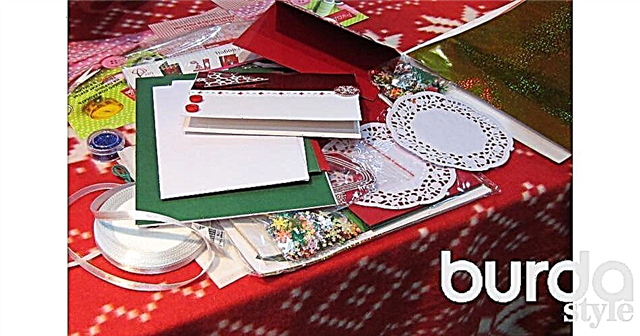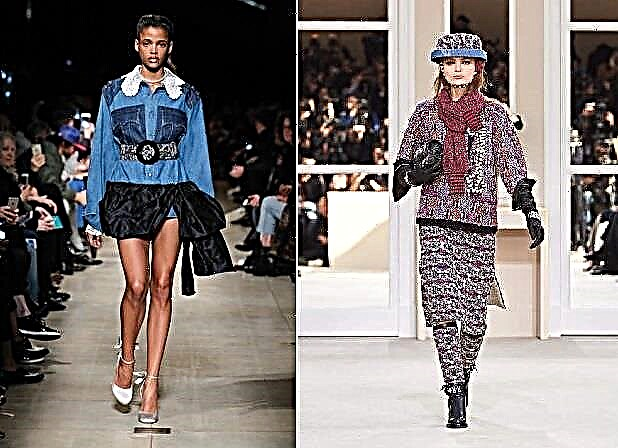There are many options for collar men's shirts. The processing method depends on the level of formality of the shirt and the type of gasket used to shape the collar.

The choice of the type of collar is determined by the physique of the man and the appointment of the shirt. The shape and size of the shirt collar and the height of the inner rack must be selected in proportion to the figure, neck and face, taking into account the width of the lapels of the suit. It is also important to maintain compliance with the level of formality of the suit and shirt, which ensures that the entire ensemble falls into style and the situation is appropriate.
The following are the distinctive features of the shapes of the collars of a shirt, their stylistic affiliation with different types of men's wardrobe and recommendations for the selection of men of different complexions.

Formal Collars:

Paul fredrick
1) Formal collars of a shirt designed to be worn complete with evening and formal suits have the smallest angle between the ends of the collar departure. It can be from 30 to 60 degrees. The ends of the collar may be sharp or rounded. Such collars are suitable for men with a thin and medium build with a narrow face.

T.M.Lewin
2) Sometimes the ends of the collar are fastened with a pin (pin collar), which is hidden under the tie knot.

Jack bunneys
3) The collar, the ends of which are fastened with a loop, is called "tab". The length of the ends of the collar can be different, there are very narrow options for wearing with a narrow tie tied with a small tight knot.
Without a tie, shirts with collars "pin" and "tab" are not worn.

T.M.Lewin
4) The most formal collars worn with tailcoats, business cards and tuxedos have small bent corners-wings on the rack (wing collar). Such collars are suitable for all men, regardless of physique, but the scope of their use is extremely limited.
Casual formal collars:

T.M.Lewin
5) Collar "kent" has an angle of divergence of the ends of departure of the collar of about 90 degrees. This is the most common option for a business suit that suits the vast majority of men.

Pink
6) The ends of the collar "cutaway" diverge at an angle of 120-130 degrees in the so-called "smile". Initially, such a collar appeared to be worn with a massive Windsor tie knot. But it looks elegant and with more popular simple nodes. These collars are suitable for men with large features.

T.M.Lewin
7) The angle of the "smile" can reach 180 degrees or more (wide cutaway collar). Such collars are often worn without a tie; they are suitable for both a suit and knitted pullovers.
The kent and cutaway collars can be sewn on a high stand with two buttons, but they are only suitable for men with a long, thin neck. They will make the dense short neck visually even shorter and will constrain them in the sock.
Informal collars:

T.M.Lewin
8) The button-down collar is similar in shape to a kent collar, but is fastened with buttons at the corners of the shirt. This is an American type of collar, first launched by Brooks brothers in 1900. His prototype was the polo shirt collar. This collar has a soft shape. It can be worn with or without a tie. Suitable for men of any complexion.

Giampaolo
9) "Mandarin" is a stand-up collar. The most informal collar of all kinds. Especially comfortable for large men wrestling physique with a short neck and large features.
- Best-seller
- Special offer

- 1
- 2
- 3
- 4
- Special offer

- 1
- 2
- 3
- 4
- Best-seller
- Special offer

- 1
- 2
- 3
- 4
In this master class, we will work on changing the shape of the collar, taking the finished Burda pattern as a basis, and also figure out how to lay in the design of the lower collar the backstage under the bones for a formal men's shirt.
Step 1
The collar of the shirt model of my choice corresponds in form to the "kent" variety. On the basis of his pattern, we model a collar of the cutaway shape with rounded corners.

Transfer the collar pattern onto a piece of paper. At the original collar, the ends of departure form an angle of 110 degrees with the line of attaching the rack. This will be about 90 degrees between the ends of the collar when buttoned. To obtain a breeding angle of 120-130 degrees, it is necessary to reduce the angle of inclination of the ends of the collar to 70 degrees. Draw a new line from the inner corner of the collar to the departure line and further 1-1.5 cm, connect the new point with the departure line pattern.

A rounded collar can be built on the basis of the kent collar according to the model or on the basis of the modeled cutaway collar, as well as arbitrarily changing the angle of inclination up or down. When building, it is advisable to take into account the physique and appearance of the man, as described in the introduction to the master class. I chose a tilt angle of 80 degrees and slightly elongated ends of the collar.
Gusset processing in a men's shirt using Vincent Smith technology
Step 2
Having decided on the shape and preparing the pattern of the collar, you can proceed to the construction of the pattern of the lower collar with drawstring under the bones. The bones are stiff slats that help the collar of a strict shirt keep a clear shape.
There are several ways to handle the backstage. In the framework of this master class, we will consider two of them. The choice of processing method for each specific product does not depend on the shape of the collar, but only on personal preferences and material properties.
Pattern of a collar with one-piece undercuts under the bones (method 1).

Divide the angle of departure of the collar in half with a bisector (dashed line), put 0.6-0.7 cm on both sides of the bisector, draw parallel lines. This is the location of the drawstring with a width of 1.2-1.4 cm (focus on the width of the bones you use + 4-5 mm for freedom).
Divide the collar departure end line into approximately three parts, through the point of the lower third draw a line to the seam of the stitching of the collar to the rack (bottom line of the drawstring). Check: the length of the drawstring is equal to the length of the bone + the width of the finishing line for the collar to fly off. An additional dashed line is the oversize of the detail.

Leave the top of the collar pattern intact. To the bottom line of the drawstring, mirror the upper part of the collar departure to the line of allowance for the clearance. On the bottom line of the drawstring will pass the bend of the part. Next, translate the end of the collar departure as a separate part - the collar clearance.
Pattern of a collar with one-piece under-the-bone drawstring (method 2).

On the pattern of the collar with rounded corners, finish the missing corner and draw its bisector. On both sides of the bisector, put aside half the width of the drawstring, draw parallel lines. Connect the inner corner of the collar to the drawstring line.Behind the drawstring line 1-1.5 cm draw a dashed line - oversize of the detail of the gap.
Reshoot the clearance from the lower collar pattern as a separate part.
Continuation of the master class in the following publication:
Processing the collar of a men's shirt with pads for pits
The author of the master class and photo: Elena Lenkova

Lena has a higher and special education - a tailor of outerwear for men, women and children.
In clothes, he appreciates the individuality and thoughtfulness of the image, the originality of the cut. He likes to analyze modeling techniques and product processing technology. Leads his page on Instagram. Many people know Lena as a longtime user of the BurdaStyle.ru website.
"The quality of processing and the interior decoration of the product are integral aspects of sewing."
Material prepared by Julia Dekanova



